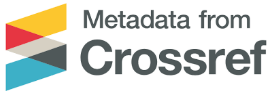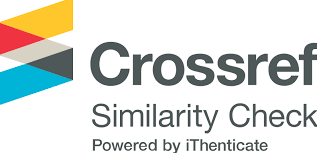RESEARCH ON PROPAGATION OF HOANG DANG (Fibraurea tinctoria Lour) IN QUANG NINH PROVINCE
Keywords:
Propagation, Fibraurea tinctoria LourAbstract
Hoang Dang (Fibraurea tinctoria Lour) is a valuable multipupose brushwood spiece graded in
IIA group. Hoang Dang has important pharmaceutical functions in traditional medicine. Its root
has been widely used to treat some diseases such as inflammation, diarrhoea, ulcerate, pustule,
yellow fever,.... Palmitate extracted from root of Hoang Dang is a active element to cure red
sore eyes, digestive disorder, to product tranquillizer. In the past, Hoang Dang was widely
distributed in nature. Due to exhauted exploitation and deforestation for agricultural
development during recent decades, Hoang Dang’ natural distributed region and resource are
came down rapidly. To impove that situation, research on Hoang Dang propagation for breeding
and seedling supply, conservation, medicine supply, as well as economic and social development
on mountainous area of Quang Ninh province has its own real and sciential significance. The
research result shows that clonal propagation by cutting propagation technique can be applied.
The two growth hormone agents - IAA and IBA with 1500, 1000 and 500 ppm concentration are
used. With 1500 ppm, the rootting rate, the amount of root and rootting lenght (in average) are
higher than that those with 1000, 500 ppm and none chemical. As for vegetative propagation, the
three seed treatment experiments are tested. Treated seed experiment by soaking in warming
water at 40oC in 10 hours has high germinative rate (82.2%). Treated seed in wet sand has
81.1% germinative rate. Treated seed experiment by soaking in cold water in 10 hours has low
germinative rate (78.9%). In nursery, Hoang Dang seedlings have high surviving rate (87.5% at
the age of 12 month). Up to 12 month of age, seedlings should be planted in nursery. Young
trees reach 0.5m in diameter, 40cm in height can be transplanted in plantation.
References
/1. Võ Văn Chi, Từ điển cây thuốc Việt nam. NXB Y học. Hà Nội, 1999.
/2. Nguyễn Tập và nhiều người khác. Kết quả điều tra cây thuốc ở Việt Nam, 2004. Báo cáo
đề tài cấp Nhà nước KC.10.07, 2001 – 2004.
/3. Nguyễn Hải Tuất và các cộng sự, 2005. Khai thác và sử dụng SPSS để sử lý số liệu
nghiên cứu trong lâm nghiệp. NXB Nông nghiệp, Hà Nội.
/4. Nguyễn Hải Tuất và công sự, 2006. Phân tích thống kê trong lâm nghiệp. NXB Nông
nghiệp, Hà Nội.
/5. Bộ Khoa học và công nghệ môi trường. Sách đỏ Việt Nam, 1996. Nhà xuất bản Khoa
học và Kỹ thuật Hà Nội, phần thực vật.
/6. Danh lục Đỏ cây thuốc Việt Nam, 2001 và 2004.
/7. Trung tâm nghiên cứu Lâm đặc sản, Lâm sản ngoài gỗ Việt Nam, Dự án hỗ trợ chuyên
ngành lâm sản ngoài gỗ pha II tại Việt Nam, 2006.
/8. Viện Dược liệu, Cây thuốc và động vật làm thuốc ở Việt Nam, Tập I, II, Nhà xuất bản
Khoa học kỹ thuật, Hà Nội, 2004.
/9. Viện Dược liệu, báo cáo kết quả điều tra cây thuốc tại xã Đồng Lâm, huyện Hoành Bồ,
tỉnh Quảng Ninh, Dự án hỗ trợ chuyên ngành lâm sản ngoài gỗ pha II tại Việt Nam, 2006.
/10. Viện Dược liệu, Nghiên cứu thuốc từ thảo dược, Nhà xuất bản Khoa học kỹ thuật, Hà
Nội, 2006.








